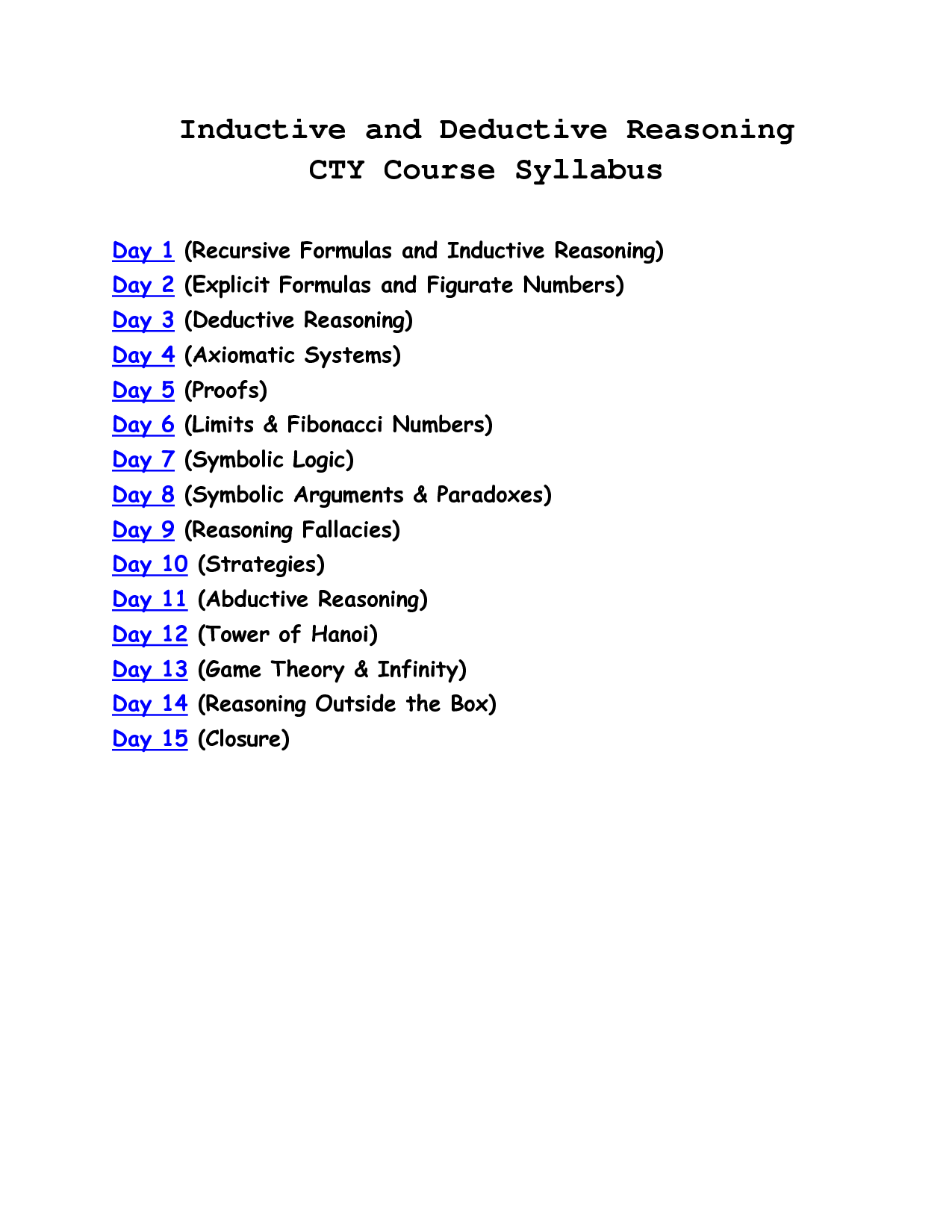Fallacies in Reasoning Worksheets
Fallacies in reasoning can be a tricky concept to grasp, but with the right resources, understanding and identifying them becomes much easier. For those seeking to sharpen their critical thinking skills and learn to spot logical errors, fallacies in reasoning worksheets provide an excellent tool. These worksheets offer a structured approach to learning about fallacies, breaking down each type and providing examples that will help the reader become more adept at discovering flaws in arguments. Whether you're a student looking to ace your next philosophy exam or a curious individual interested in the art of logical thinking, these worksheets are worth exploring.
Table of Images 👆
More Other Worksheets
Kindergarten Worksheet My RoomSpanish Verb Worksheets
Cooking Vocabulary Worksheet
DNA Code Worksheet
Meiosis Worksheet Answer Key
Art Handouts and Worksheets
7 Elements of Art Worksheets
All Amendment Worksheet
Symmetry Art Worksheets
Daily Meal Planning Worksheet
What is the Bandwagon Fallacy?
The Bandwagon Fallacy is a logical fallacy where an argument is considered valid solely because a large number of people believe it to be true. In essence, the bandwagon fallacy suggests that something must be true or good because it is popular or widely accepted, without any real evidence or logical reasoning to support the claim.
What is the Straw Man Fallacy?
A Straw Man Fallacy is a logical fallacy where someone misrepresents or misinterprets an opponent's argument in a weaker or distorted form, making it easier to attack or refute. This fallacy involves creating a straw man version of the argument rather than accurately addressing the original points presented.
What is the Ad Hominem Fallacy?
The Ad Hominem Fallacy is a logical fallacy where an argument is rejected or criticized based on irrelevant personal characteristics or traits of the person making the argument, rather than on the merits of the argument itself. Instead of addressing the actual issues or arguments presented, this fallacy attacks the individual's character, motives, or other unrelated factors as a way to discredit their position. It is considered a weak and dishonest form of argumentation that does not logically refute the original argument.
What is the Slippery Slope Fallacy?
The Slippery Slope Fallacy is a type of logical fallacy where one asserts that a relatively small first step will lead to a chain of events ending in some significant, usually undesirable, outcome without providing evidence that such a chain of events will occur. It assumes that one action will inevitably lead to a series of related events, often exaggerated or extreme, without acknowledging potential alternate outcomes or intervening factors.
What is the Appeal to Authority Fallacy?
The Appeal to Authority Fallacy is a logical fallacy where someone seeks to validate a claim by relying on the opinion or credibility of someone who is not an expert in that particular field or topic. The fallacy occurs when the authority figure being appealed to lacks the relevant expertise or credibility to support the argument being made, therefore making the claim weak or invalid.
What is the False Cause Fallacy?
The False Cause Fallacy, also known as the causal fallacy or the post hoc fallacy, occurs when one incorrectly assumes that because one event happened before another, the first event must have caused the second. This fallacy overlooks other possible explanations or factors that could be influencing the relationship between the two events.
What is the Hasty Generalization Fallacy?
The Hasty Generalization Fallacy is a logical error where a conclusion is drawn from insufficient evidence or a small sample size. This fallacy occurs when someone makes a broad generalization about a group, person, or situation based on limited or inadequate evidence, without considering all relevant factors or variations within the group.
What is the Red Herring Fallacy?
The Red Herring Fallacy is a rhetorical tactic where irrelevant information is presented to divert attention away from the main issue or argument at hand. This fallacy attempts to sidetrack the conversation and deceive listeners by introducing a distraction that may seem related but actually does not address the central point being discussed.
What is the False Dichotomy Fallacy?
The False Dichotomy Fallacy is a logical fallacy in which a situation is presented as having only two possible options or outcomes when there are actually more alternatives available. This oversimplification ignores the complexity or nuance of a situation and can lead to misleading conclusions or decisions. It restricts thinking by creating a false sense of limited choices, often used to manipulate opinions or obscure more reasonable solutions.
What is the Appeal to Emotion Fallacy?
The Appeal to Emotion fallacy is a logical fallacy where an argument is made by manipulating the emotions of the audience, rather than providing valid reasoning and evidence. This fallacy seeks to evoke strong feelings in order to persuade people, without relying on logical and factual support. It is considered a fallacy because it does not logically prove the validity of an argument, but rather plays on emotions to sway opinions.
Have something to share?
Who is Worksheeto?
At Worksheeto, we are committed to delivering an extensive and varied portfolio of superior quality worksheets, designed to address the educational demands of students, educators, and parents.





































Comments